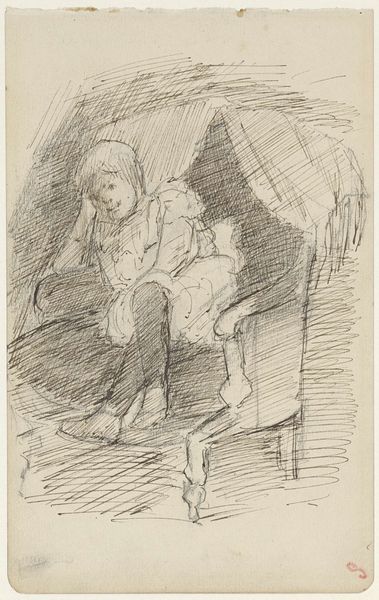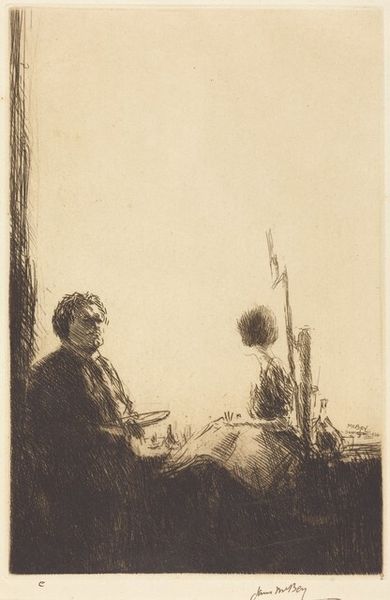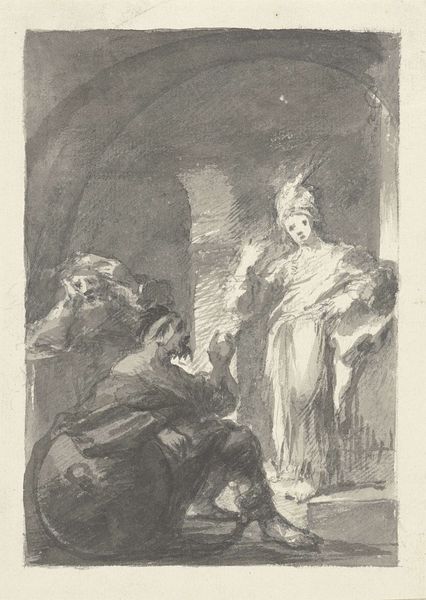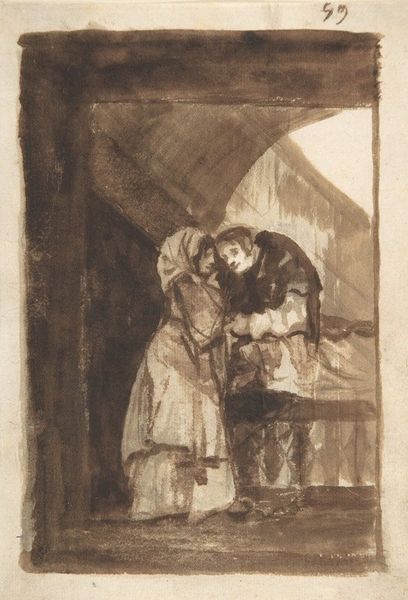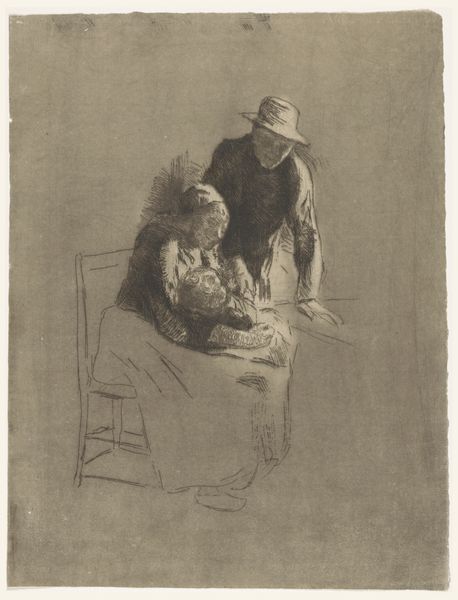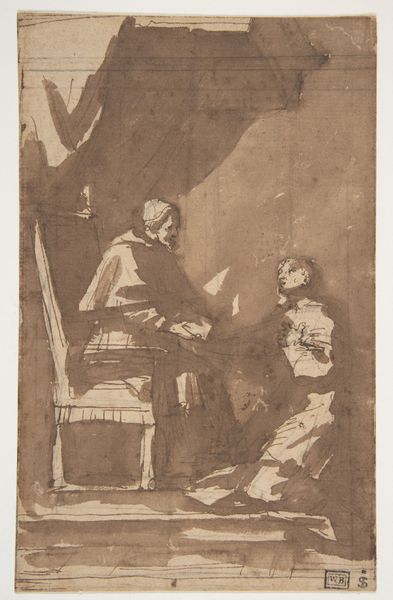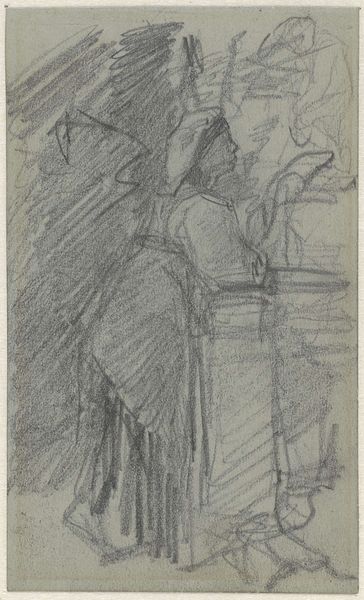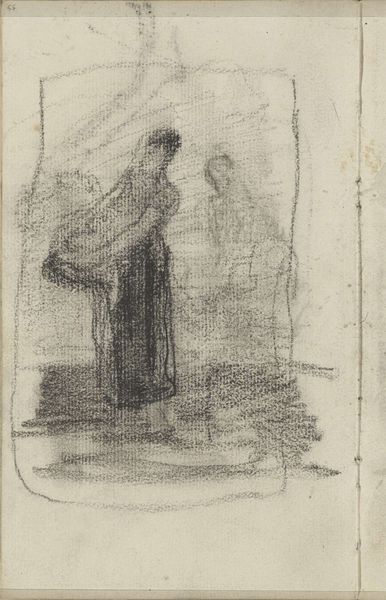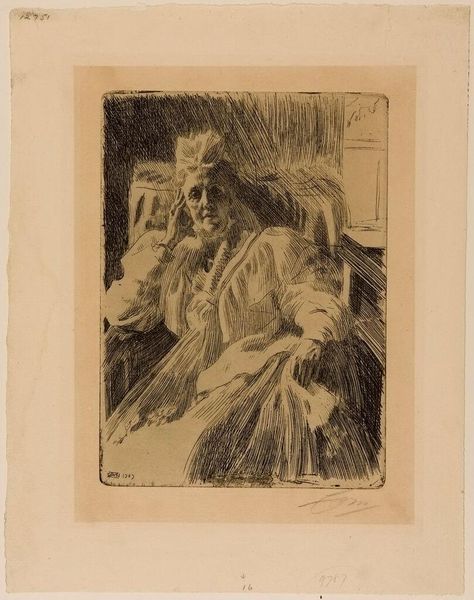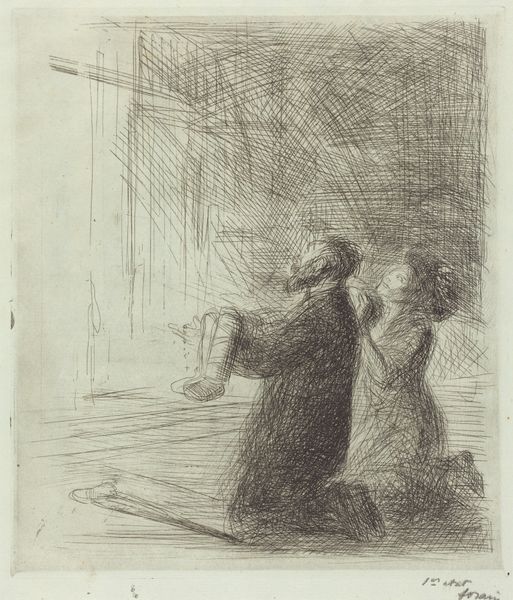
drawing, charcoal
#
portrait
#
drawing
#
dutch-golden-age
#
pencil sketch
#
charcoal drawing
#
pencil drawing
#
genre-painting
#
charcoal
#
realism
Dimensions: height 326 mm, width 246 mm
Copyright: Rijks Museum: Open Domain
Curator: This drawing, held here at the Rijksmuseum, is titled "Two Fisherwomen Conversing Over a Lower Door," created by Jacob Maris sometime between 1847 and 1899 using charcoal and pencil. Editor: It has a wonderfully somber feel. The monochrome palette creates an intimate mood, as if eavesdropping on a private exchange. The quick strokes suggest it’s more of a fleeting impression than a formal portrait, what do you make of it? Curator: Agreed. The emphasis lies in the tonal relationships – the dark, velvety charcoal providing depth, especially grounding the standing figure. Note the way Maris uses shadow to define form; this manipulation of light and dark establishes the hierarchy within the image itself, directing our eye from the standing figure down to the seated woman. Editor: It’s difficult to ignore that hierarchy, isn't it? The women are literally positioned differently within the composition. The woman standing is cloaked, obscuring a sense of individualism, and is perhaps an older figure given that her downturned gaze seems laden with concern or disapproval, compared to the seated woman who appears both more grounded and more approachable in her relative openness. I can’t help but consider what the specifics of that conversation might entail within the societal confines of the time. Curator: Intriguing point. Certainly, we see elements that were crucial during this period of Realism. Note the simplification of forms, and how this reduces detail and therefore reduces the impact of individuality within a drawing. Maris focused on the figures' relationship to each other, and not their physical appearance, to highlight their bond and, frankly, their toil. The rapid lines further support the sense of this being caught in transit, fleeting, unglamorous. Editor: Right, because these genre paintings and drawings provided a perspective on everyday realities during a period when societal structures and class tensions were really pronounced. Consider that the setting is intentionally sparse, giving the women, and their interactions, prominence against their impoverished environment. Curator: Indeed. Maris masterfully harnesses charcoal to depict a slice of 19th-century Dutch life. Its power stems from the interplay between light and shadow, rather than minute details. Editor: Agreed, and seeing beyond the surface, the true artistry of Maris shines through when viewing his subjects not just as figures but also as barometers of the difficult socio-economic climate during the 19th century. It leaves you with a haunting understanding of their situation.
Comments
No comments
Be the first to comment and join the conversation on the ultimate creative platform.

